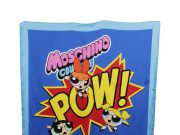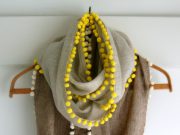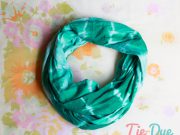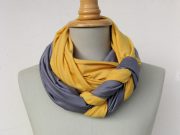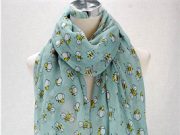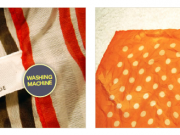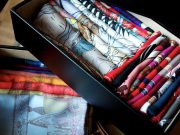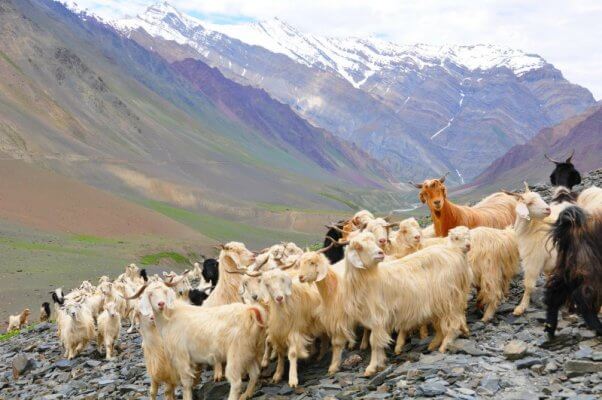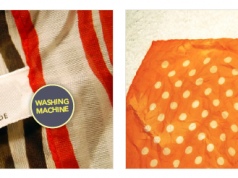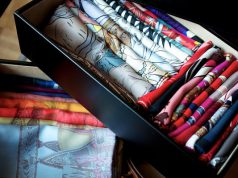Cashmere scarf? Cashmere pashmina? Tick. Tick. I think it’s fair to say that we would all like a beautiful women’s cashmere scarf to complete our wardrobe, but what exactly is cashmere? What should we be looking for when buying it? Where does cashmere come from and how is it made? And what exactly is the Chyangra label attached to some cashmere pashminas?
A Little History
Well, to begin with the name cashmere comes from an old spelling of the word Kashmir. This is the region in northern India where its production and trade originated. Cashmere has been sourced in this, and the surrounding areas of Nepal and Tibet, for hundreds of years. It has a long and fascinating history.
Premium quality pure cashmere feels deliciously soft against the skin and has always been highly prized for its warmth and beauty. Once its rich jewel-like dyes are factored in, it is easy to see why cashmere scarves, wraps, shawls and pashminas are sought the world over.
However, anyone looking to buy a ladies’ cashmere scarf or cashmere pashmina will be very aware that its price varies enormously. This is obviously a reflection of the quality of the raw material, the finest of which traditionally comes from Kashmir, Tibet and Nepal.
Which leads us nicely to the next couple of questions.
How is cashmere made? And why is it so expensive?
The journey of each cashmere pashmina begins with the humble mountain goats who survive in the high altitudes of the Himalayas. Here the climate and environment are perfectly suited to the production of the cashmere fibres. During the extremely harsh winters, the temperatures here can drop to as low as -20c and the food supply becomes scarce. This lack of vegetation prevents the goats from producing fat and instead they produce a finer hair under their fleece which offers more insulation. It is this very soft, fine hair on their body which is valuable and from which the highest quality pure cashmere is produced. The fleece is collected in March and April each year.
The Chyangra Label
Unfortunately, in recent years, there has been an influx of mass-produced imitation cashmere pashminas flooding the market. This has both driven down the price and damaged the reputation of the real thing.
The Nepalese government, in particular, were extremely concerned about the impact that this cheap cashmere was having on their economy. It threatened the livelihood of those who rely heavily on the income from the sale of their luxurious Chyangra cashmere. Incidentally, the name Chyangra comes from the species of goat which live in the mountainous region of Nepal. And so they came up with the idea of the prestigious Chyangra Pashmina trademark. The logo has since been registered in over 40 countries.

The Chyangra pashmina label is a guarantee of a genuine and superior product. It also reassures the purchaser that the production of the cashmere product is environmentally responsible and has compiled with strict quality standards and fair employment laws.
Exporters may obtain the Chyangra Pashmina trademark label only if their cashmere product complies with a rigid process of accreditation. Nepalese producers will also monitor the sale of cashmere scarves around the world to protect their trademark.
At UrbanLondon we are delighted to have sourced our new collection of women’s cashmere shawls, each one with this important hallmark. We also feel that we are helping to maintain an important and beautiful craft skill. It goes some way to supporting the livelihood and quality of life for people who depend on the Chyangra pashmina industry in Nepal.


